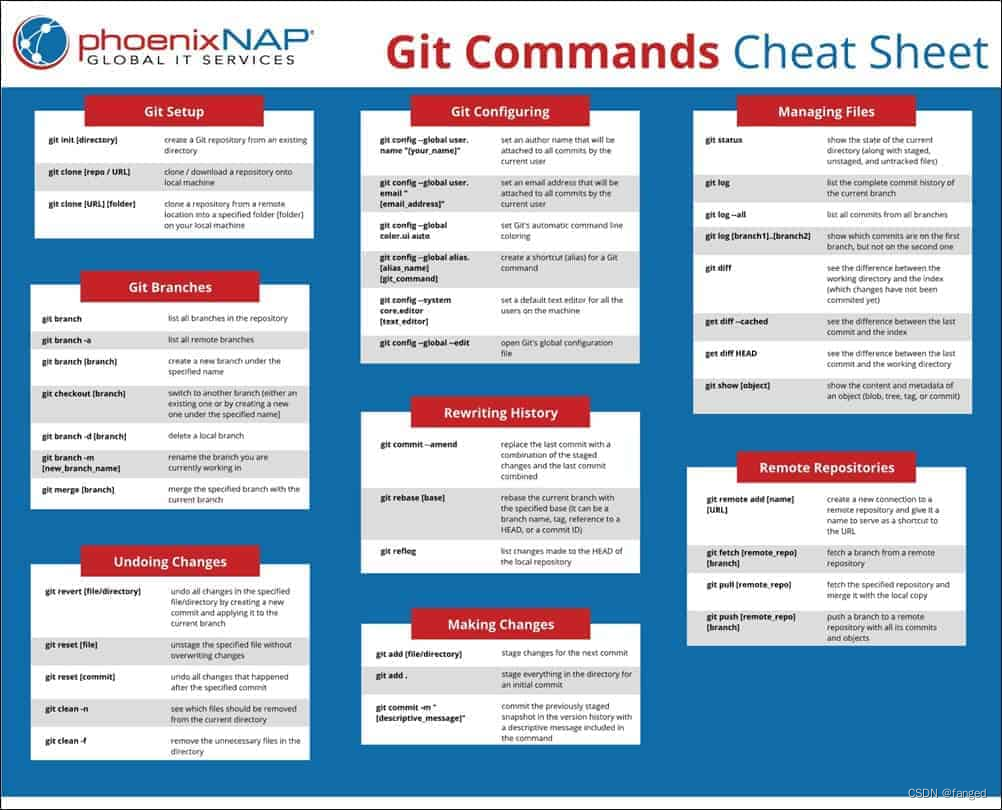

常用场景:

初始化:
git config --global user.name "codelabs"
git config --global user.email my@codelabs.com
git init
git remote add origin https://github.com/username/repository.git
git pull origin master提交:
git add ./git add <file1> <file2> ...
git commit -m "Your commit message here"
git push撤回:
参考最后的链接。
Patch:
-
找到要生成 patch 的提交范围:确定要生成 patch 的提交范围,可以是单个提交、一系列连续的提交,或者两个提交之间的差异。
-
使用 git format-patch 生成 patch:在命令行中执行以下命令:
git format-patch <commit> --stdout > my_patch.patch其中
<commit>是要生成 patch 的提交范围的最后一个提交。这将生成一个名为my_patch.patch的文件,其中包含了从指定提交到当前 HEAD 的所有更改。 -
传输 patch 文件:将生成的 patch 文件传输给其他人或应用程序。您可以使用电子邮件、文件共享服务等方式发送文件。
-
应用 patch:其他人或应用程序可以使用
git apply命令将 patch 应用到其本地代码库中。例如:git apply my_patch.patch
合并:
git checkout main
git merge feature
git add <conflicted_file>
git commit
git commit -m "Merge feature branch"Git rebase和Git merge区别,然后rebase会丢失提交,所以一般用merge。
只合并一个或者几个提交的话,可以用cherrypick
git cherrypick <commit-hash-1> <commit-hash-2> ...最后很推荐的是这个网站,玩游戏方式学习git
Learn Git Branching
参考:
Git 的 4 个阶段的撤销更改
45 个 Git 经典操作场景,助你一臂之力
动图展示 10 大 Git 命令,一目了然
C++ 实践 | Git 入门


 -synchronized 关键字使用详解)






)









